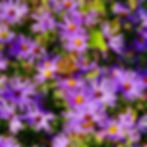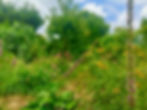What is Ecological Landscaping?
- Wes and Diantha Duren
- Feb 15, 2024
- 2 min read
Updated: Jul 28
Ecological Landscaping is the utilization of practices, procedures and products that are generally safer and more gentle for all lifeforms and our surrounding environments. What is the Goal of Ecological Landscaping? The goal of ecological landscaping is to mimic nature's diverse beauty and functions, while minimizing ecological impact. Every action and deliberation of an ecological landscape considers the well-being of the natural world and its inhabitants, while developing functional landscapes and gardens with the ability to regenerate and proliferate.

Typical ecological landscapes include elements such as:
Indigenous Plants with native roots,
perennial and annual Edible Plants (also known as Edimentals, short for Edible Ornamentals),
Traditional Ornamental Plants,
Tree Plantings,
retaining and draining stormwater in systems such as Rain Gardens and Sponge Gardens,
capturing rooftop water for use in gardens in Rain Barrels,
Cisterns and other water catchment vessels.
Other Ecological Landscape materials include:
stone,
aggregate,
clay,
natural fibers,
wood,
leaves,
straw,
hay,
pine straw,
pine bark,
Compost and the use of other natural and eco-friendly building materials.
Working with Certified Organic products for all yard needs,
Controlling Soil Erosion,
Installing Mow-Free Lawns,
Building Ecosystems and adding to ecosystems like Forests,
Wetlands,
Prairies,
Wildlife Gardens,
Food Forests,
building Children’s Nature Playscapes,
Xeriscapes for lower water use,
Landscape Restoration and Revitalizing,
general Yard Maintenance,
new Landscapes,
Indoor Natural Environment Development,
establishing Wild Edibles and Wild Medicinals,
Ornamental Water Features,
Sanctuary Development,
Medicinal Gardens,
Patios,
Walkways,
Sitting and Retaining Walls,
Pathways,
Sitting areas,
Outdoor Kitchens,
LED Lighting,
Arbors and Gazebos,
Fire Pit and Fireplaces,
Hardscape Restoration and other techniques to help engage our clients with their yards.
Ultimately, Ecological Landscaping is entering into a reciprocal relationship via the stewardship and regenerative management of land - enriching the land with beneficial and beautiful plants and materials that will enhance a yard and make it more usable, valuable and attractive for every Being.

Come Join Us!
If you happen to be attending the 45th OEFFA (Ohio Ecological Food and Farm Association) Conference, Wesley will be giving a workshop on Ecological Landscaping and Beyond.
Friday February 16th Workshop Session II:
10:45 a.m. - noon
Can’t make it? Wesley will be posting his powerpoint onto our Blog following the presentation.
* Online registration closed on February 1. A limited number of on-site registrations will be available at the conference.
Wesley’s Late Winter Winner: Hazelnut

Who doesn’t like Hazelnuts?
These fantastic native shrubs produce a yearly abundance of delicious nuts that are just as good for fresh eating as they are for making Hazelnut Milk with. The shrub, as an ornamental, grows to fifteen feet tall and ten feet wide with clean semi round foliage that turns red in the fall. Growing in both full sun to part shade, Hazelnuts will grow in many locations. It’s best to use two or more compatible varieties for optimal cross pollination and increased nut production.

The Catkins seen waving in the wind are in bloom right now, and are the male flowers of the Hazelnuts, which are very pretty swaying in the wind.

